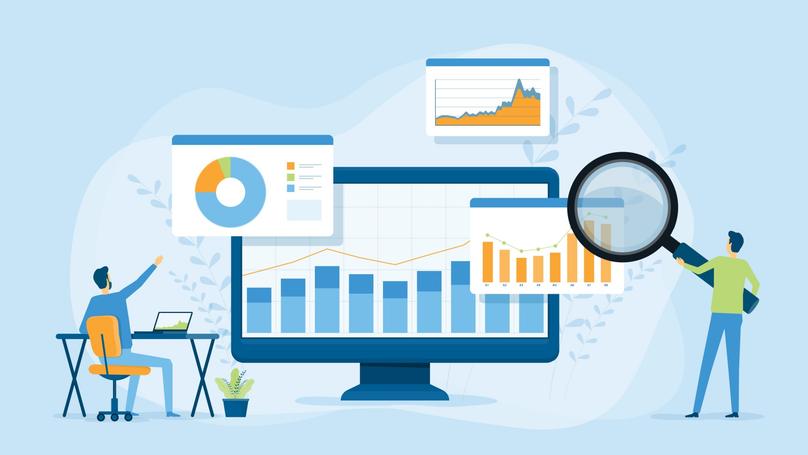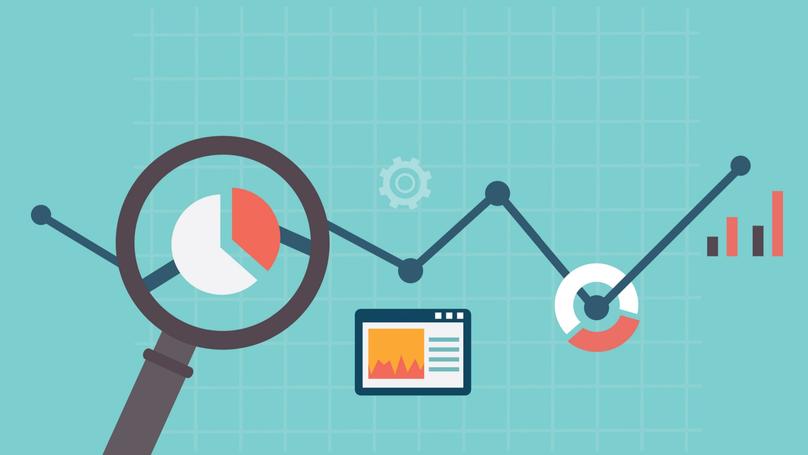Porter's Five Forces

What are Porter's five forces?
Porter's Five Forces is a widely used framework for assessing the critical factors that impact business profitability. As you might guess, there are five of them: customers, suppliers, substitute products, and new and existing competitors. In other words, forces are the key elements that significantly impact and pressure a business.
Porter's Five Forces analysis is a time-honored approach for evaluating a specific company's potential, the likelihood of attaining business success, and upholding dominance in an intensely competitive environment. Additionally, Porter's five forces are an effective tool for developing a long-term brand development strategy, examining the target audience and other outside influences.
In 1979, Michael Porter, an American economist and Harvard Business School professor, introduced a similar model. Therefore, from the end of the last century to this day, this tool has been widely employed to scrutinize and enhance the efficiency of companies by examining the forces affecting them. The scientist specialized in researching the phenomenon of competition. He stated that the primary objective of the newly devised model was to identify external threats before they had a negative impact. Porter identified buyers, suppliers, direct competitors, and substitutes as the most critical factors.
Discover more about each of Porter's forces
Porter categorized the forces he assigned into two broad groups:
-
The forces of horizontal competition
-
The forces of vertical competition.
The first group consists of existing substitute products and new competitors. The second factor involves the impact of goods suppliers and consumers' power.
However, Let's begin systematically, starting with the most impactful factor.
Buyers
Consumers play a crucial role in shaping the market. They generate demand, want high-quality products for a low cost, discounts, and the option to buy goods through installments or credit. In other words, customers always want one thing: for the product to be better while simultaneously reducing its cost. To achieve this, companies must continuously enhance the quality of their products or services or reduce costs. Consequently, these factors impact the company's overall profitability, which steadily falls under these circumstances due to increased costs for producing higher-quality products or a reduced price per unit of goods.
Consumers can easily switch to a different manufacturer if they find more attractive products with great prices. Additionally, the consumer base undergoes periodic shifts in tastes and interests, switching to new fashion trends and altering their selection norms. Therefore, consumers can pressure manufacturers of goods and services who seek to adapt to their customers' changing needs.
This is especially vital for retaining the target audience and your leadership position in the market.
Suppliers
Following the concluded contract, suppliers undertake to deliver certain materials, raw materials, resources, or finished goods according to the agreed-upon schedule. They depend on the number of products produced and released, as well as their variety and quality. Suppliers can pressure businesses by implementing pricing policies, including raising the prices of the materials they supply.
It's important to remember that unethical suppliers may provide materials of inadequate quality or even defective ones, miss deadlines, be late with the shipment, or unexpectedly decline to collaborate with the company. Each of these situations negatively impacts the overall profitability of the business.
Suppliers exert extremely significant influence on companies in the following circumstances:
-
If only a few suppliers cater to most industry-leading companies, the demand for raw materials will exceed the available supply.
-
If raw materials or other essential resources are insufficient to meet the demands of all manufacturing companies.
-
If raw materials are unique and companies cannot seek alternative suppliers, modify logistics, or find different solutions to address supply issues
When working with suppliers, it's imperative to assess all possible risks. While it's unlikely that you can altogether avoid such risks, staying prepared and having an alternative plan readily available is prudent.
Competitors
It is also important to remember the impact of the competitive environment on business. The author of Porter's Five Forces concept divides competitors into two groups:
-
Existing competitors
-
New competitors.
The most substantial and most dangerous threat is to existing competitors. Many products from other manufacturers lack distinctive features that set them apart. Hence, the battle for the target audience becomes most fierce among competitors whose sales figures are roughly equivalent.
Therefore, as more companies manufacture specific goods in the market, the level of competition escalates. Also, competition intensifies when the market practically does not develop and starts during a decline. Companies strive to maintain their sales at a higher level.
Emerging manufacturers are entering the market with cutting-edge technologies, new products, and user-friendly designs. Their products are generally more responsive to customer requirements. In other words, emerging industry players are captivating audiences with products established brands can no longer provide. Therefore, it is possible to safeguard yourself against existing and new competitors by having a distinctive selling intention that sets you apart in the market. This refers to a product with unique features that others cannot replicate.
Substitutes
These are referred to as substitute products because, in reality, no product can be entirely replaced by any other. The substitute is not necessarily a product of direct competitors. This could even be a product from a different category. However, it will undoubtedly address the same problem the customer is facing. For example, you can solve the dilemma of spending an evening in completely different ways - go to a restaurant, a movie, or a theatre, or perhaps not spend money but take a stroll in the park. In particular situations, a restaurant can substitute for a cinema, even though these two establishments are not direct competitors.
Furthermore, when the sales of one substitute product increase, it implies a significant reduction in the sales of another. Therefore, manufacturers need to demonstrate the value of their products. Substitute products can threaten existing businesses by losing to more high-tech, environmentally friendly, and in-demand alternatives. To prevent this from happening, you must continuously monitor emerging trends, improve your products, promptly invite the audience to evaluate adjustments of your products, and occasionally present completely new innovative solutions. Suppose companies do not improve the quality of their products and cannot highlight their unique attributes compared to the substitute products. In that case, profits will decrease because buyers will have a choice - to purchase a similar product on more favorable terms.
As a result, when each of Porter's forces exerts less pressure, the company has a greater chance of achieving huge profits.
What is the purpose of Porter's five forces analysis?

Porter's five forces analysis will help develop companies, that is, actively operating businesses, and for startups and newcomers to the market. In the first case, Porter's tool identifies and evaluates prospects in a particular market. Startups use this model to assess their business ideas and implementation capabilities.
Therefore, both experienced and young companies opt for Porter's five forces technique for:
-
Studying existing and plausible threats that hinder the company's development and profit growth.
-
Conducting competitive analysis and building reliable protection against competitive forces.
-
Developing the key benefits of manufactured products.
-
Planning long-term growth strategy.
Additionally, Porter's industry analysis approach proves valuable in addressing various challenges, including evaluating the viability of launching a new product, assessing potential external obstacles to achieving both short-term and long-term objectives, and identifying the most probable risks.
Advantages and disadvantages of the Porter method
First, Porter's five forces analysis is considered a universal method for assessing external factors affecting businesses of various sizes and in any industry. Furthermore, it does not necessitate financial investments or additional resource-intensive research. Additionally, Porter's model boasts other advantages:
-
It enables the anticipation of market risks and other threatening factors that may impede the company's growth.
-
Evaluating the company's current market position, strengths, and weaknesses.
-
Recognizing fresh opportunities for profit expansion and overall business development
-
Making well-informed, logical, and effective decisions; identifying optimal strategies.
-
The ability to predict outcomes when creating a new strategy or product.
Consequently, Porter's five forces model strengthens the company's position in the industry and helps identify key competitive advantages by analyzing crucial influencing factors.
However, Porter's five forces analysis also has disadvantages. Implementing this model requires a lot of time and other resources. However, its primary focus is on strategic planning and the long term rather than allowing for quick decisions to enhance the brand's position in a competitive environment. In other words, Porter's theory cannot be applied immediately. There must be an extensive preparatory phase, in-depth examination of external factors, and thorough research before formulating a plan for subsequent actions.
How to use Porter's Five Powers: template and examples

Porter's analysis can be carried out in different ways, such as performing a quick study or delving into a more detailed examination of the business's influences. The outcome depends on the type of data the company seeks: a rapid analysis reveals the brand's overall market presence. At the same time, a thorough examination provides a detailed description and explanation of how each factor impacts the company's specific position among competitors and its overall market standing.
However, the key stages of performing Porter's five forces analysis for direct and in-depth research are identical steps:
Stage 1. Assess the level of buyer influence. It is important to analyze the target audience's loyalty, the possibility of switching to another manufacturer or substitute, the sensitivity to changes in product prices, and the level of satisfaction with the product.
Stage 2: Assess possible threats from suppliers, determine their reliability and stability, and analyze the likelihood of an increase in the cost of raw materials.
Stage 3: Assess the degree of competition in the market and the competitiveness of a specific company product. At this stage, it is necessary to analyze threats from existing competitors, new players, and substitute products.
Stage 4. Obtain results and general findings and develop a long-term strategy through the conclusion of the analysis.
Both express analysis and in-depth research involve creating tables to organize intermediate and final results. Let's look at this tool using express analysis as an example.
The table consists of five columns and six rows to do this. In the first column, you must enter all business forces; their difficulty level is assessed in points from 1 to 10 in the next three. The stages are as follows: up to 3 points - the threat is low, 4-7 - medium, and 8-10 - high and very high. In the last column, you need to add the results. It looks like this:
|
Strength |
Degree of strength |
Degree of influence of force |
Ability to minimize force pressure |
TOTAL |
|
Buyers |
||||
|
Suppliers |
||||
|
Current competitors |
||||
|
New competitors |
||||
|
Substitute products |
To objectively assess the severity of force, its impact, and potential solutions, we need to address the following questions:
-
Does this threat exist and affect the company?
-
What impact does it have? What indicators decline due to the force pressure?
-
What will this cause?
-
Can we address the current issue, and if so, what additional resources will be needed?
Next, you need to calculate the final rating. There is a simple formula for this:
Degree of expression of force + Degree of influence of force - Opportunities for minimizing force = TOTAL
Suppose the final rating for most of the influencing factors surpasses 5 points. In that case, it indicates that external forces significantly detrimentally affect the business.
Each of Porter's five forces must be examined individually for a more comprehensive analysis, leading to more objective and precise outcomes. To do this, you must select parameters to explore all influencing factors or one particular one you want to examine.
Every company establishes these conditions autonomously based on its industry and current market position. When analyzing existing or new competitors, you should evaluate the total number of industry participants, the volume of products they produce, and the industry's rate of growth and development.
When conducting an extensive analysis, the criteria for each force are determined on a scale of 1 to 3 points and added together. If we continue to look at the example of competitor analysis, we can take a look at the following table:
|
Parameter |
Parameter Estimation |
||
|
1 |
2 |
3 |
|
|
Total number of participants |
|
|
|
|
Their market presence in terms of product volume. |
|
|
|
|
Market entry costs |
|
|
|
|
Access to distribution channels |
|
|
|
|
Industry development pace |
|
|
|
|
The degree of product differentiation |
|
|
|
|
Limitation on price increases |
|
|
|
Next, evaluate each parameter and relate it to either the low (1), medium (2), or high (3) threat level column. The degree of risk for each parameter is determined in increasing order.
From there, you can analyze the next indicator, such as buying pressure. To establish this, consider the following requirements:
-
The number of regular and highly loyal customers.
-
The proportion of customers who consistently purchase products in significant quantities.
-
The uniqueness of the intended product.
-
The product price and its impact on purchasing decisions.
-
The level of product quality.
-
The level of customer satisfaction.
The power of suppliers, in turn, can be determined by examining the following factors:
-
Number of suppliers on the market.
-
Supplier's interest in the industry.
-
Capabilities and limitations of suppliers.
-
The rarity of raw materials and the difficulty in accessing their supplies.
One universal indicator for substitute products is the ratio of price and quality compared to other products.
Additional parameters depend on the industry and the particular product's features.
How to evaluate your results

A thorough examination of Porter's five forces produces accurate and reliable insights into a business's most significant risks. Companies create action algorithms to eliminate or at least reduce threats depending on the data received. So, suppose the market development indicator has shown that the industry is moving to an online space. In that case, you should develop a digital version of your product, create an online store, and offer services remotely. If substitute products do not seriously threaten your product, you must maintain its uniqueness and improve its quality. When faced with a significant threat from new competitors, the company should carefully analyze what it provides, enhance its product, and monitor industry changes.
Even so, it's crucial to acknowledge that analyzing the five forces could uncover significant, unforeseeable, and expensive risks that shouldn't be ignored. If the risks are small, Porter's model will help you abandon an unpromising idea and save money and time. On the other hand, it will show you which direction you must develop and what actions to take.
It is advisable to create a final table to organize your findings systematically. In this table, describe each influential factor, and in the adjacent column, outline the specific work areas where proactive measures should be taken to mitigate potential threats. Porter's five forces of influence model allows us to discover not only a description of the external issues of the market and a specific business within its framework but also determine how to proceed.
What other tools can be used with the Porter model?
Typically, Porter's Five Forces Analysis is used with other effective techniques for improving efficiency and profitability. For example, the results of an investigation into the forces affecting a business can be further used when conducting a SWOT analysis. This is the name of a tool from the strategic planning field that enables you to examine external and internal factors influencing the company's advancement in a particular industry. It looks at current market conditions, formulates additional action strategies, and resolves diverse business scenarios. The abbreviation stands for strengths (advantages), weaknesses (disadvantages), opportunities (opportunities), and threats (threats). Therefore, using the SWOT analysis technique this approach enables you to assess the company's performance, evaluate the potential of its new products, pinpoint its strengths and identify the weaknesses and vulnerabilities of the brand, detect various risks and threats, and also discover strategies to safeguard the business during critical moments and pivotal transitions.
PEST analysis, along with its various variations, is another marketing tool used to assess the external environment in which a company operates. It is primarily intended for long-term planning, and it is also employed when introducing a new product. This analysis helps assess the main market trends over the next few years and identifies potential risks and growth opportunities. The abbreviation means P - politics, E - economics, S - society-culture, and T - technology. Therefore, PEST analysis assesses the business impact in each of these areas.
The 4P analysis-product, Price, Place, and Promotion-is an equally popular technique. It measures the effectiveness of a marketing mix strategy that includes product, price, place, and promotion. Porter's model can also be advantageous when employing 4P analysis. Likewise, you can use the 4P method when preparing for Porter's Five Forces Analysis.
Likewise, Porter's model is frequently used in conjunction with such financial analysis tools as the BCG matrix, or the Boston Consulting Group, which studies the demand for company products, and the GE McKinsey matrix, which evaluates the prospects of the entire business.
Conclusion
Therefore, Porter's Five Forces Analysis data can be a starting point for developing a startup or planning a new long-term growth strategy for an experienced brand. This enables companies to mitigate the risk of financial losses, enhance consumer loyalty by improving their products, and consistently stay attuned to industry events, current trends, and fashion.
You must remember that Porter's model is flexible and influenced by specific circumstances. Porter's framework requires regular consultation since it can change significantly over time. Doing so will give you insight into the company's performance, external risks, threats, and how to navigate situations effectively.























